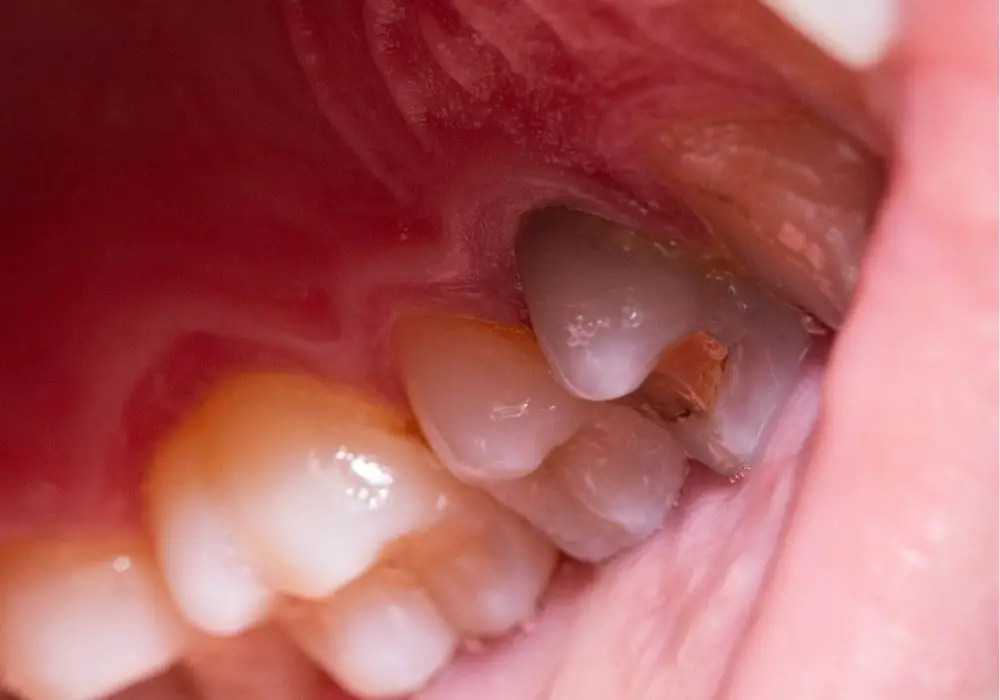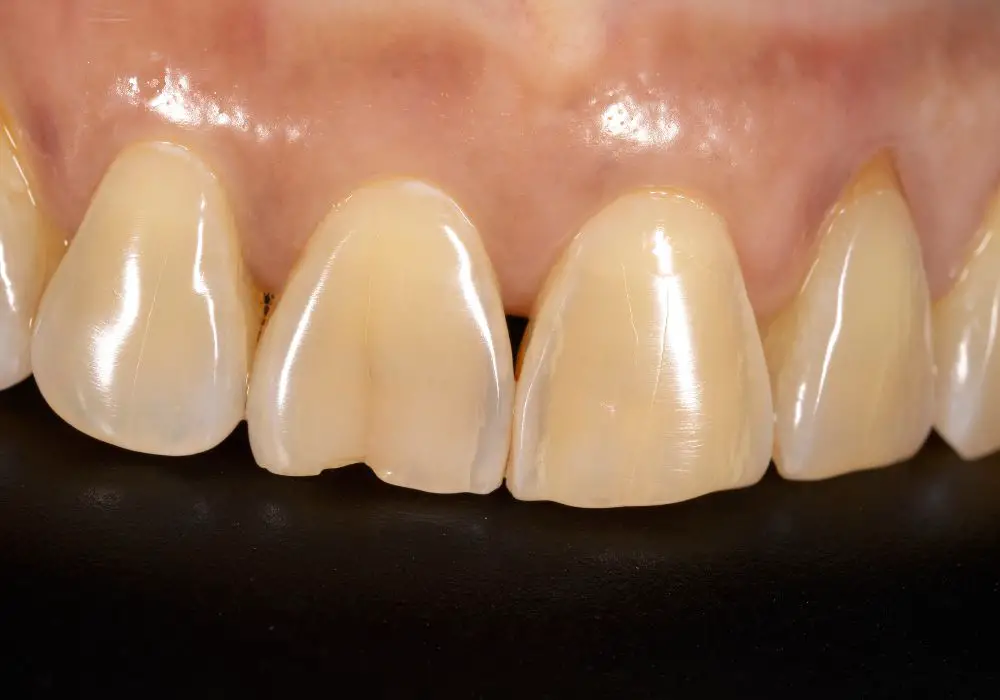Have you recently undergone a root canal treatment and noticed a change in the color of your tooth? It’s not uncommon for teeth to turn gray or darker in color after root canal treatment. This can be a result of the medicated pastes used by the dentist to clear the infection inside the tooth. While this is usually not a problem for back teeth, it can be a concern for front teeth, which are more visible and can affect your confidence in your smile.
The discoloration can also be caused by deposition of pigment within the tooth from the nerve, usually due to major trauma. This reactive process can cause calcification within the tooth, leading to a yellowish hue. If you’re experiencing tooth discoloration after a root canal, it’s important to consult with your dentist to determine the cause and explore treatment options.
Understanding Root Canal Procedure
If you are experiencing tooth pain or sensitivity, your dentist may recommend a root canal procedure. Root canal treatment is a common dental procedure that can relieve pain and save your tooth from extraction.
During a root canal procedure, the infected or damaged pulp of your tooth is removed, and the inside of your tooth is cleaned and disinfected. Here’s what you can expect during a typical root canal procedure:
- Anesthesia: Your dentist will numb the area around the affected tooth with a local anesthetic to ensure that you don’t feel any pain during the procedure.
- Access: Your dentist will make a small hole in the top of your tooth to access the pulp chamber and root canals.
- Removal: Using small instruments, your dentist will remove the infected or damaged pulp from your tooth.
- Cleaning: Your dentist will clean the inside of your tooth to remove any remaining bacteria and debris.
- Filling: Your dentist will fill the inside of your tooth with a special material called gutta-percha to seal the root canals and prevent further infection.
- Restoration: After the root canal procedure, your tooth may be weak and vulnerable to further damage. Your dentist may recommend a crown or other restoration to protect your tooth and restore its function.
Overall, a root canal procedure can be a highly effective way to save a damaged or infected tooth. If you are experiencing tooth pain or sensitivity, talk to your dentist about whether a root canal may be right for you.
Why Would a Tooth Change Color After a Root Canal?
If you have recently undergone a root canal treatment, you might be wondering why your tooth has changed color. Here are some possible reasons:
- Medications used during the treatment: Your dentist may have used a medicated paste to clear the infection inside the tooth. This paste can sometimes cause the tooth to turn gray or black. However, this discoloration is usually not a problem for back teeth that are not visible.
- Trauma to the tooth: If the tooth was injured before the root canal treatment, it may have already started to change color. The root canal treatment can also cause some trauma to the tooth, which can exacerbate the discoloration.
- Poor blood supply to the tooth: The pulp of a tooth contains blood vessels that supply nutrients and oxygen to the tooth. If the blood supply is compromised due to infection or trauma, the tooth can start to change color.
- Filling or crown material: Sometimes, the filling or crown material used to restore the tooth after the root canal treatment can cause the tooth to appear darker or lighter than the surrounding teeth.
It is important to note that tooth discoloration after a root canal treatment is not always a cause for concern. However, if the discoloration is accompanied by pain, swelling, or other symptoms, you should contact your dentist immediately.
Factors Influencing Tooth Discoloration After a Root Canal

If you’re concerned about the color of your tooth after a root canal, it’s important to understand the factors that can influence tooth discoloration. Here are two key factors that can impact the color of your tooth after a root canal:
Type of Filling Material Used
The type of filling material used during your root canal procedure can impact the color of your tooth. For example, if your dentist used a silver amalgam filling, your tooth may appear gray or black. On the other hand, if your dentist used a tooth-colored composite filling, your tooth may look more natural.
Damage to Internal Tooth Structure
During a root canal procedure, your dentist removes the damaged or infected pulp from inside your tooth. This can sometimes cause damage to the internal structure of your tooth, which can impact its color. For example, if your tooth’s internal structure is damaged, it may appear darker or grayish.
It’s important to note that not all teeth will change color after a root canal procedure. However, if you do notice a change in the color of your tooth, it’s important to talk to your dentist about your options for addressing the issue. They may be able to recommend a whitening treatment or other cosmetic procedure to help improve the appearance of your tooth.
Preventing Tooth Discoloration After a Root Canal
If you have recently undergone a root canal, it is important to take certain steps to prevent tooth discoloration. Here are some tips to help you maintain the natural color of your teeth:
Proper Dental Hygiene
Maintaining good dental hygiene is crucial to prevent tooth discoloration after a root canal. Brush your teeth twice a day with fluoride toothpaste and floss daily to remove plaque and food particles that can lead to staining. In addition, consider using a whitening toothpaste to help remove surface stains.
Regular Dental Checkups
Regular dental checkups are essential to maintaining the health of your teeth and preventing discoloration. Your dentist can monitor the color of your teeth and identify any changes that may indicate a problem. They can also provide professional cleanings to remove stubborn stains and recommend whitening treatments if necessary.
By following these simple tips, you can help prevent tooth discoloration after a root canal and maintain a bright, healthy smile. Remember to practice good dental hygiene and schedule regular checkups with your dentist to keep your teeth looking their best.
Treatment Options for Discolored Teeth After Root Canal

If you have a discolored tooth after a root canal, there are several treatment options available to help restore your smile. Here are two common options:
Internal Bleaching
Internal bleaching is a procedure where a bleaching agent is placed inside the tooth to lighten it. This is a safe and effective way to improve the appearance of a discolored tooth. The procedure involves removing the filling material from the tooth and placing a bleaching agent inside. The tooth is then sealed with a temporary filling and left for a few days. After a few days, the temporary filling is removed and replaced with a permanent filling. Internal bleaching is usually done in one or two visits to the dentist.
Dental Crowns
Dental crowns are another option for treating discolored teeth after a root canal. A crown is a cap that covers the entire tooth, restoring its shape, size, and strength. Crowns can be made from a variety of materials, including porcelain, ceramic, and metal. Porcelain crowns are the most popular because they look the most like natural teeth.
Before placing a crown, the dentist will prepare the tooth by removing any remaining decay and shaping it to fit the crown. The dentist will then take an impression of the tooth and send it to a dental lab to create the crown. While the crown is being made, the dentist will place a temporary crown on the tooth to protect it. Once the permanent crown is ready, the dentist will remove the temporary crown and place the permanent crown on the tooth.
In conclusion, there are several treatment options available to treat discolored teeth after a root canal. Internal bleaching and dental crowns are two common options that can help restore your smile. It’s important to discuss your options with your dentist to determine which treatment option is best for you.
Frequently Asked Questions
Can a tooth change color after a root canal?
Yes, a tooth can change color after a root canal. This is because the nerve and blood supply to the tooth have been removed, which can cause the tooth to become discolored over time.
What are the common causes of discoloration after a root canal?
The most common cause of discoloration after a root canal is the buildup of bacteria and decay within the tooth. This can cause the tooth to become discolored and may require further treatment to correct.
How can I prevent tooth discoloration after a root canal?
To prevent tooth discoloration after a root canal, it is important to practice good oral hygiene habits, including brushing and flossing regularly. Additionally, it is important to avoid consuming foods and drinks that can stain your teeth, such as coffee, tea, and red wine.
Is it possible to whiten a tooth after a root canal?
Yes, it is possible to whiten a tooth after a root canal. Your dentist may recommend internal bleaching or other whitening treatments to help restore the natural color of your tooth.
What are the signs of a failed root canal?
The signs of a failed root canal may include pain, swelling, and sensitivity in the affected tooth. Additionally, you may notice discoloration or an abscess around the tooth.
Can a root canal tooth fall out?
In some cases, a root canal tooth may fall out if it becomes severely damaged or infected. However, this is rare and can usually be prevented with proper dental care and treatment.







